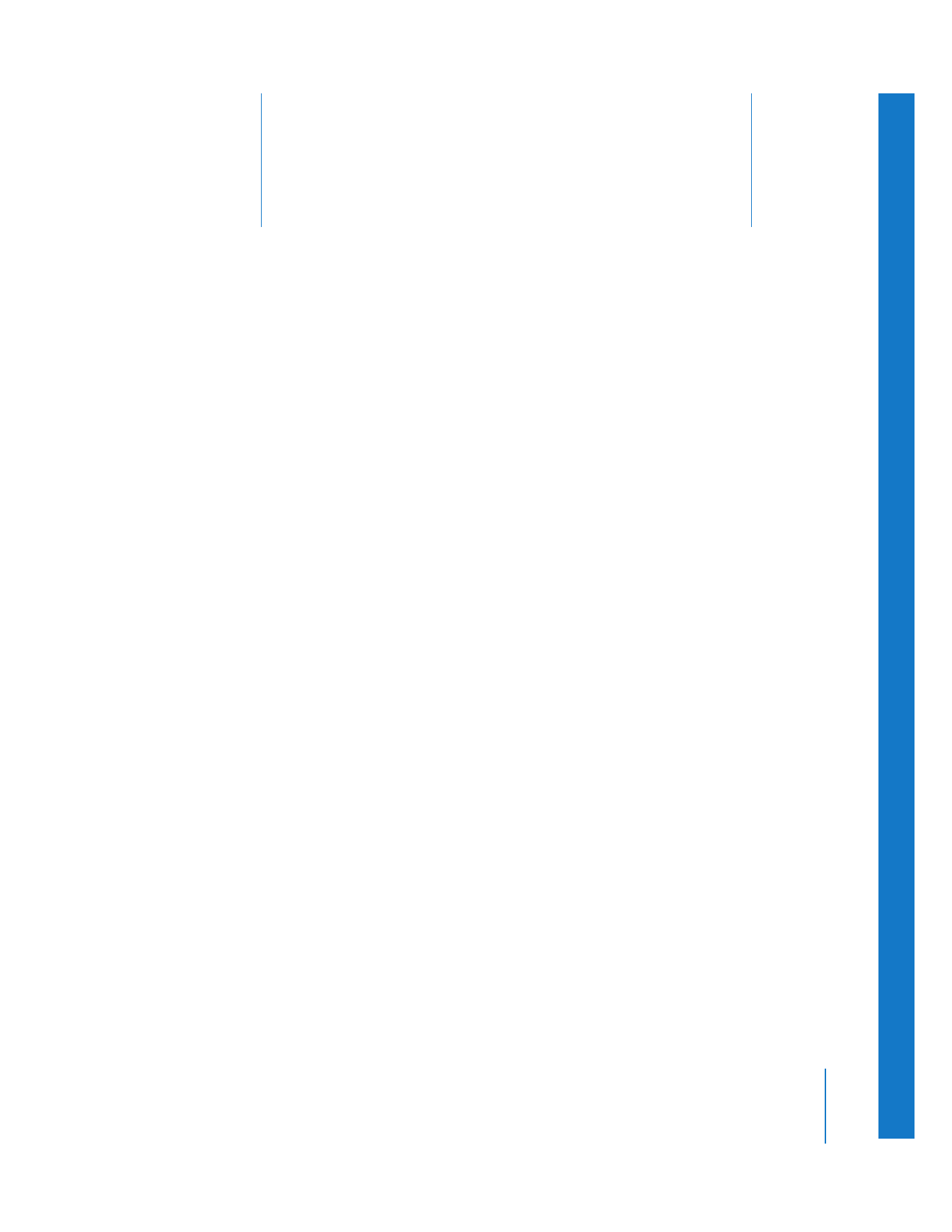
Overview of the Drag-to-Timeline Editing Process
(p. 137)
Â
Dragging Clips to the Timeline
(p. 138)
Â
Doing Simple Insert and Overwrite Edits in the Timeline
(p. 139)
Â
Automatically Adding Tracks to Your Sequence While Dragging
(p. 142)
Overview of the Drag-to-Timeline Editing Process
Drag-to-Timeline editing is as simple as dragging a clip from the Browser or Viewer and
placing it where you want in the Timeline. Sequence In and Out points, as well as
Source and Destination controls, are generally disregarded when you drag clips to your
sequence, making it faster and easier to place clips where you want in the Timeline.
Note: There are some situations in which Source and Destination controls affect which
clip items are dragged to the Timeline. See “
Exceptions to Normal Use of Source and
Destination Controls
” on page 127 for details.
Drag-to-Timeline editing is most useful during the early rough editing phase, when you
are adding clips more freely to the Timeline. However, once you have an established
structure to your sequence, dragging clips to the Timeline may lack the precision you
need to fine-tune your edits.

138
Part II
Rough Editing
In drag-to-Timeline editing, only two steps are involved:
Step 1:
Set clip In and Out points in the Viewer
Here you specify which part of a clip you want to place in your sequence. You do this
by opening the clip in the Viewer and setting the In and Out points (where the clip
should start and end when placed in a sequence).
If you want to place a whole clip or group of clips in the Timeline, you can skip this
step. For information on arranging a group of clips, see “
Preparing a Sequence Order in
the Browser
” on page 96.
Step 2:
Drag the clip to the Timeline
Drag one or more clips from the Browser or the Viewer to the Timeline.